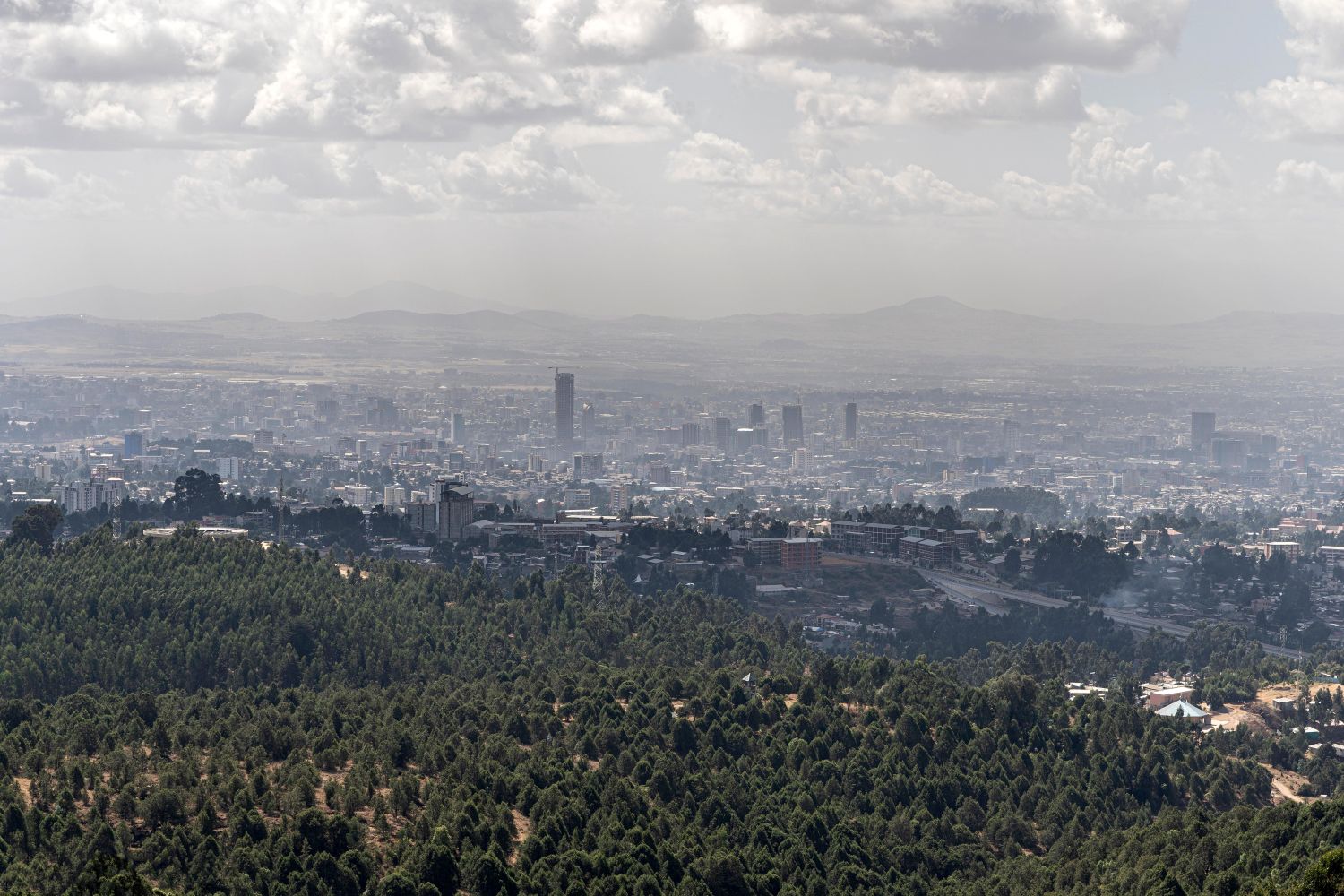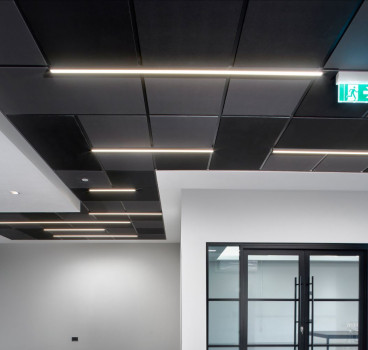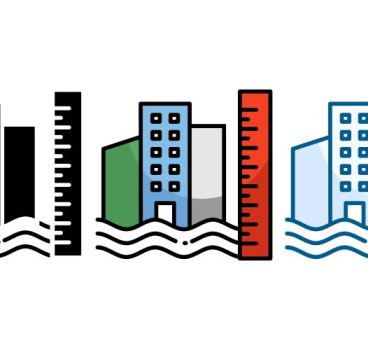Why African megacities are the real testbed for future construction
A quiet revolution is happening in Africa, where megacities like Lagos, Nairobi and Addis Ababa are experiencing explosive growth, fuelled by rapid urbanisation and a burgeoning informal sector. These cities, often overlooked in global conversations, are becoming the real testbeds for the future of construction, offering invaluable lessons in resilience, adaptability and resourcefulness, writes John Ridgeway.
Africa is urbanising at an unparalleled rate. By 2050, the continent's urban population is projected to triple, with megacities like Lagos expected to become some of the largest in the world. This rapid growth presents a unique set of challenges, particularly for existing infrastructure, which is struggling to keep pace with the influx of new residents, leading to overcrowding, inadequate sanitation and strained resources.
A significant portion of the urban population currently lives in informal settlements, characterised by unplanned construction, lack of basic services and vulnerability to environmental hazards. And because many African cities face limited access to funding, technology and skilled labour, it is forcing them to rely on innovative and often unconventional solutions.
Coastal cities like Lagos are also particularly vulnerable to sea-level rise and increased flooding, while others face challenges related to water scarcity and extreme heat.
However, these challenges, while daunting, are also driving a wave of innovation in construction and urban planning. African megacities are not just replicating Western models - they are forging their own path, developing solutions that are uniquely suited to their particular context.
The power of the informal sector
A defining characteristic of African megacities is the prominence of the informal sector. While often viewed as a problem, the informal sector is also a source of incredible ingenuity and resilience.
Lacking access to formal financing and supply chains, informal builders rely on locally sourced materials, recycled waste and creative improvisation. This means that informal construction methods are often highly adaptable, allowing builders to respond quickly to changing needs and environmental conditions. Informal construction is also and often a community-driven process, with residents actively involved in building their own homes and neighbourhoods.
This "bottom-up" approach to urban development is generating innovative solutions that are often more sustainable and contextually appropriate than top-down, planned developments.
Examples of Innovation in African Megacities
For example, we are now seeing in Lagos, Nigeria, (pictured at top of page) the development of floating communities and vertical expansion. Faced with chronic flooding and land scarcity, Lagosians are developing innovative solutions for living on water. The Makoko Floating School, designed by NLÉ Architects, is a prime example of how local materials and traditional knowledge can be used to create sustainable and resilient floating communities.
In densely populated areas, vertical expansion is taking on unique forms. Residents are adding stories to existing structures using lightweight materials and innovative construction techniques, often without formal permits, demonstrating a remarkable ability to adapt and expand living spaces.
In Nairobi, Kenya, we are seeing new upcycled construction and waste management practices. Nairobi faces a growing challenge with waste management, but innovative entrepreneurs are turning this problem into an opportunity. Companies are using recycled plastic waste to create building materials like bricks and paving stones, reducing pollution and providing affordable housing solutions.
The use of shipping containers for housing, offices, and shops is also gaining popularity in Nairobi. These containers are readily available, relatively inexpensive and can be easily modified and transported, offering a flexible and sustainable building solution.

In Addis Ababa, Ethiopia, (Above) we are seeing the development of earth construction and other traditional techniques. Addis Ababa has a long history of earth construction, with traditional methods like rammed earth and adobe still widely used today. These methods are being adapted and modernised to create durable, energy-efficient, and affordable housing.
Architects are also incorporating traditional Ethiopian architectural elements, such as the "tukul" (a roundhouse with a thatched roof), into modern designs, creating a unique blend of tradition and innovation.
Lessons for the future of construction
The innovations emerging from African megacities offer valuable lessons for the future of construction, particularly in the face of rapid urbanisation and climate change. As a result, instead of viewing the informal sector as a problem to be eradicated, we need to recognise its potential as a source of innovation and resilience. By working with informal builders and communities, we can develop more inclusive and sustainable urban development strategies.
African cities have demonstrated the importance of utilising locally sourced materials and traditional building techniques. This approach reduces reliance on expensive imports, minimises environmental impact and creates a stronger sense of place.
In addition, in a rapidly changing world, buildings and infrastructure need to be adaptable and flexible. The informal sector's ability to modify and expand structures quickly offers valuable lessons in designing for uncertainty.
The success of many informal construction projects also highlights the importance of community involvement in the design and building process. Empowering residents to shape their own living environments leads to more sustainable and equitable outcomes.
However, while African megacities are hubs of innovation, they also face significant challenges. The informal nature of much construction can lead to safety concerns and environmental degradation. Governments need to develop appropriate regulations and building codes that are both flexible and enforceable.
Informal builders often lack access to formal financing, limiting their ability to invest in improved materials and techniques. Innovative financing mechanisms, such as microloans and community-based savings schemes, are needed.
The rapid pace of urbanisation, also requires massive investment in infrastructure, including roads, sanitation and public transportation. Governments need to prioritise infrastructure development to support sustainable urban growth.
Furthermore, African cities are disproportionately vulnerable to the impacts of climate change, requiring urgent action to adapt and mitigate these risks. Investing in resilient infrastructure, promoting sustainable land-use planning and empowering local communities are crucial.
Despite these challenges, the opportunities are immense. African megacities have the potential to become models of sustainable and resilient urban development, offering valuable lessons for the rest of the world.
All this means that the future of construction is not being written in the boardrooms of multinational corporations - it is being forged in the bustling, dynamic, and often chaotic streets of African megacities. These cities, with their rapid growth, vibrant informal sectors and unique challenges, are the real testbeds for the innovations that will shape urban living in the 21st century.
By embracing the ingenuity and resilience of African urban dwellers, we can develop more sustainable, adaptable and inclusive approaches to construction and urban planning. The world needs to pay attention to what is happening in Lagos, Nairobi and Addis Ababa, because the lessons learned there will be crucial for building the cities of tomorrow.
Additional Blogs

When fire breaks out who really knows the system
The story that caught my attention recently wasn’t about fire growth or building loss, it was about confusion. Specifically, the confusion faced by the fire service when arriving at buildings...
Read moreThe design and development of Nexus Layouts
When Zentia set out to rethink the suspended ceiling, the brief was clear: deliver greater creative freedom for designers, more distinctive visual identity for clients, and a solution that could keep...
Read more

The 100-year construction project or why longevity Is the new sustainability
For decades, the construction sector has defined sustainability through metrics such as operational energy, embodied carbon, material efficiency and circularity. These measures remain vital, but a...
Read more